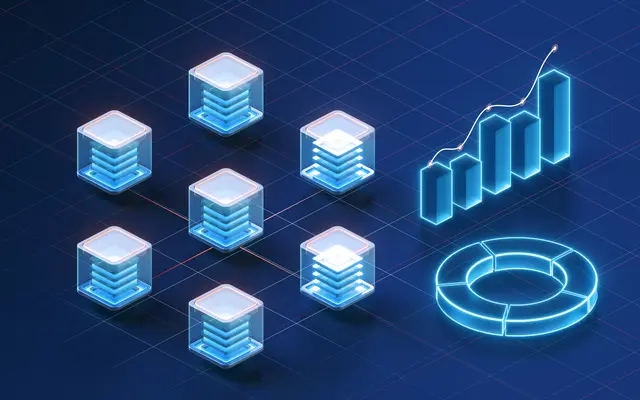Embracing Quality Control Inspection Automation: A Journey Towards Supply Chain Excellence
In today’s fast-paced supply chain landscape, ensuring the quality of incoming shipments is paramount for businesses to maintain customer satisfaction and minimize costs. Quality Control Inspection Automation offers a transformative solution, empowering businesses to streamline their inspection processes and achieve unparalleled efficiency and accuracy.
Gone are the days of manual inspections, prone to human error and inconsistencies. By leveraging the power of Python, AI, and cloud-based solutions, businesses can automate their quality control procedures, allowing them to:
- Enhance Accuracy: Automated inspection systems eliminate human error, ensuring precise and consistent quality checks.
- Increase Efficiency: Automation streamlines the inspection process, reducing labor costs and expediting product delivery.
- Improve Decision-Making: Real-time data analysis provides valuable insights, enabling informed decision-making and proactive quality management.

Python, AI, and Cloud: The Cornerstones of Quality Control Inspection Automation
Python for Unattended and Attended Bots:
Python excels in developing both unattended and attended bots for quality control inspection automation. Unattended bots operate autonomously, performing repetitive tasks such as scanning barcodes and capturing images. Attended bots, on the other hand, assist human inspectors by providing real-time data and guidance, enhancing their decision-making and productivity. Python’s versatility and extensive libraries make it ideal for building customized bots tailored to specific inspection requirements.
Cloud Platforms: Powerful Automation Orchestrators
Cloud platforms offer a comprehensive suite of features and capabilities that far surpass traditional RPA/workflow tools. They provide:
- Scalability: Cloud platforms can seamlessly scale to handle varying inspection volumes, ensuring uninterrupted operations.
- Data Storage and Analytics: Cloud platforms offer robust data storage and analytics capabilities, enabling businesses to track and analyze inspection data for continuous improvement.
- Integration with AI: Cloud platforms seamlessly integrate with AI services, empowering businesses to leverage advanced AI techniques for improved accuracy and efficiency.
AI for Enhanced Accuracy and Edge-Case Handling
AI plays a crucial role in enhancing the accuracy and efficiency of quality control inspection automation. Specific AI techniques, such as:
- Image Recognition: AI algorithms can analyze images captured during inspection, automatically detecting defects and anomalies.
- Natural Language Processing (NLP): NLP enables bots to understand and respond to human language, facilitating communication with inspectors and stakeholders.
- Generative AI: Generative AI techniques can create synthetic data for training and testing automation models, addressing edge cases and improving overall performance.
By harnessing the power of Python, AI, and cloud platforms, businesses can elevate their quality control inspection processes to new heights, ensuring product quality, reducing costs, and enhancing customer satisfaction.

Building the Quality Control Inspection Automation with Python and Cloud
Sub-Processes and Automation with Python and Cloud:
- Data Acquisition: Python scripts can interface with automated inspection equipment (e.g., barcode scanners, vision systems) to capture real-time inspection data. Cloud storage platforms provide a secure and scalable repository for this data.
- Data Analysis: AI algorithms integrated with the cloud platform analyze the inspection data to identify deviations from quality standards. Cloud computing resources enable parallel processing of large datasets, ensuring fast and accurate analysis.
- Decision-Making: Based on the analysis results, Python scripts trigger automated rejection and disposition processes for non-compliant items. Notifications are sent to relevant stakeholders via cloud-based communication channels.
- Data Security and Compliance: Cloud platforms adhere to strict security protocols and industry compliance standards, ensuring the confidentiality and integrity of sensitive inspection data.
Python vs. No-Code RPA/Workflow Tools:
- Customization: Python offers unparalleled customization capabilities, allowing businesses to tailor their automation to specific inspection requirements. No-code tools often limit customization, resulting in less efficient and less accurate automation.
- Scalability: Python-based automation can be easily scaled to handle varying inspection volumes, enabling businesses to adapt to changing demands. No-code tools may struggle with scalability, leading to performance issues.
- Integration: Python seamlessly integrates with a wide range of cloud services and third-party applications, providing businesses with flexibility and extensibility. No-code tools may have limited integration capabilities, hindering automation efficiency.
Algorythum’s Approach:
Algorythum recognizes the limitations of off-the-shelf automation platforms and takes a Python-first approach for Quality Control Inspection Automation. This approach empowers businesses with:
- Tailored Solutions: Custom-built automation that aligns precisely with their unique inspection requirements, maximizing efficiency and accuracy.
- Future-Proof Automation: Python-based automation is adaptable and scalable, enabling businesses to stay ahead of evolving industry trends and technology advancements.
- Data Ownership and Control: Businesses retain full ownership and control of their inspection data, ensuring data security and compliance with industry regulations.

The Future of Quality Control Inspection Automation
The future of Quality Control Inspection Automation holds exciting possibilities for businesses looking to further enhance their inspection processes. Here are a few potential avenues for exploration:
- Integration with IoT Sensors: Connecting automated inspection equipment with IoT sensors can provide real-time data on environmental conditions (e.g., temperature, humidity) that may impact product quality.
- Edge Computing: Deploying AI models on edge devices can enable real-time decision-making at the inspection site, reducing latency and improving responsiveness.
- Blockchain for Traceability: Using blockchain technology to record inspection data can create a secure and transparent audit trail, enhancing traceability and accountability throughout the supply chain.
Subscribe and Contact Us:
Stay updated on the latest advancements in Quality Control Inspection Automation by subscribing to our newsletter.
For businesses seeking to implement custom automation solutions tailored to their specific requirements, contact our team today for a free feasibility assessment and cost estimate. We’re committed to helping you achieve operational excellence through innovative automation strategies.

Algorythum – Your Partner in Automations and Beyond
At Algorythum, we specialize in crafting custom RPA solutions with Python, specifically tailored to your industry. We break free from the limitations of off-the-shelf tools, offering:
- A team of Automation & DevSecOps Experts: Deeply experienced in building scalable and efficient automation solutions for various businesses in all industries.
- Reduced Automation Maintenance Costs: Our code is clear, maintainable, and minimizes future upkeep expenses (up to 90% reduction compared to platforms).
- Future-Proof Solutions: You own the code, ensuring flexibility and adaptability as your processes and regulations evolve.









